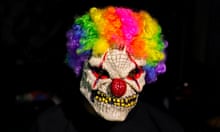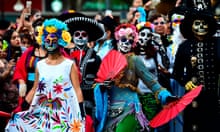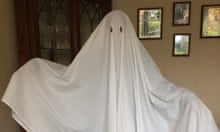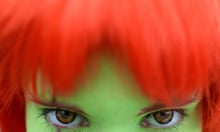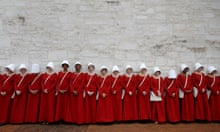Exeter is believed to hold the ignoble record of having hanged the last women convicted of witchcraft in England. Now research by a West Country academic suggests it may also have been the first place to convict and execute such unfortunates, for crimes such as being seen with a large toad.
In 2014 hundreds of modern witches converged on the city, demanding a retrospective pardon for three elderly women hanged in 1682, Temperance Lloyd, Susannah Edwards and Mary Trembles, who were followed in 1685 by Alice Molland, whose execution was believed to be the last of its kind although the law was not changed until 1735.
New research by Mark Stoyle, professor of early modern history at the University of Southampton, who lives in Exeter, suggests that the city may also have been the first to execute witches more than a century earlier. Maud Park and Alice Mead were convicted soon after the law was changed in 1563 to make “conjurations, enchantment and witchcrafts” a capital offence, and though Stoyle has been unable to find a record of their execution, he fears that was almost certainly their fate.
In 1585 Thomasine Shorte was hanged, convicted of bewitching and killing the entire family of an Exeter weaver. Men met the same fate: in 1610 Richard Wilkyns was hanged for injuring or killing livestock and people through witchcraft.
Stoyle, whose research is published this week in a book, Witchcraft in Exeter 1558-1660, said: “When you go through the records of the assizes, it is really striking how far such cases stretch back, and it’s not easy to explain why there should have been so many in Exeter. These cases do not match the traditional image of rural witches living in isolated cottages – these are urban witches, often elderly women mostly living a hand-to-mouth existence on the poor fringes of the city – but in some ways this was the ideal setting for the spread of disease, fires, the unexplained death of children and animals, exactly the sort of crimes the witches were believed to commit.”
Familiars, animals believed to be manifestations of evil spirits, were common features, Stoyle said. “Toads, for some reason, are particularly common. One unfortunate old woman was spotted by a neighbour sitting by the fire with a toad in her lap, and that was enough to condemn her.”
Mary Stone, an Exeter widow, was accused of having as a familiar a rat that spied on her neighbours. She was accused of killing chickens, infesting a household with lice and killing a man by bewitching him into falling from a field stile. Stoyle believes Stone was a rare acquittal, a woman who survived and continued to live among her presumably deeply suspicious neighbours.
Long before the law changed, Stoyle says, lawyers and magistrates had become deeply sceptical of such cases, which were regularly thrown out of court, but popular belief in spells, charms and witchcraft endured long afterwards. He found evidence of spells and charms against harm being sought from “wise women” in the West Country right up to the outbreak of the first world war and beyond, and has even heard of relatives of colleagues seeking charms in the past decade against conditions such as ringworm.
“Such beliefs are very enduring. We think of the railways as being engines of progress and communication,” he said. “But when a little Victorian railway cottage near where we live was demolished, they found a pair of shoes cemented in by the window frame, to stop witches flying in.”
The images of black cats, ubiquitous at Halloween are late-comers in the popular perception of witches, according to another West Country academic: the earliest accounts of witches’ cats are white or tabby, and other familiars included dogs, lambs, toads and ferrets.
The earliest newspaper account traced by Marion Gibson, professor of magic in literature at the University of Exeter, was in a 16th-century journal recording a spotted white cat, memorably called Satan, owned by an Essex woman called Elizabeth Francis.
She was accused in 1566 of sending the cat to punish a lover who wouldn’t marry her, and to cause ill to neighbours. Francis avoided hanging, but in 1582 Ursula Kemp, who had two cats, one grey, one black, called Tiffin and Jack, was hanged despite being regarded as a good witch who helped her neighbours with the pains of childbirth and rheumatism.
Black cats only become standard witches’ accessories in Victorian fiction, Gibson says. Earlier accounts include a rat named Phillip, a ginger and white dog named Minny, and a ferret owned by Joan Prentice called Bid, who was said to have arrived out of the blue announcing “I am Satan. Fear me not.”
The early reports also often portrayed “witches” as young and noble, rather than poor old women. In 1441 Eleanor Cobham, Duchess of Gloucester, was accused of necromancy and raising the dead, and of paying astrologers to foresee the death of the king. She was only made to do penance through the streets dressed in a white robe: her fellow witch, Margery Jourdemayne, was burned at the stake. Gibson said she believed Cobham’s story may have inspired the scheming noblewoman Cersei Lannister in Game of Thrones.

